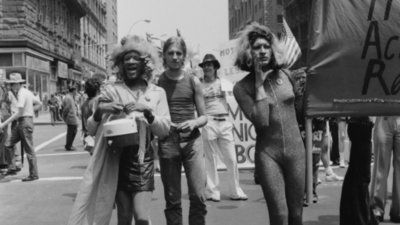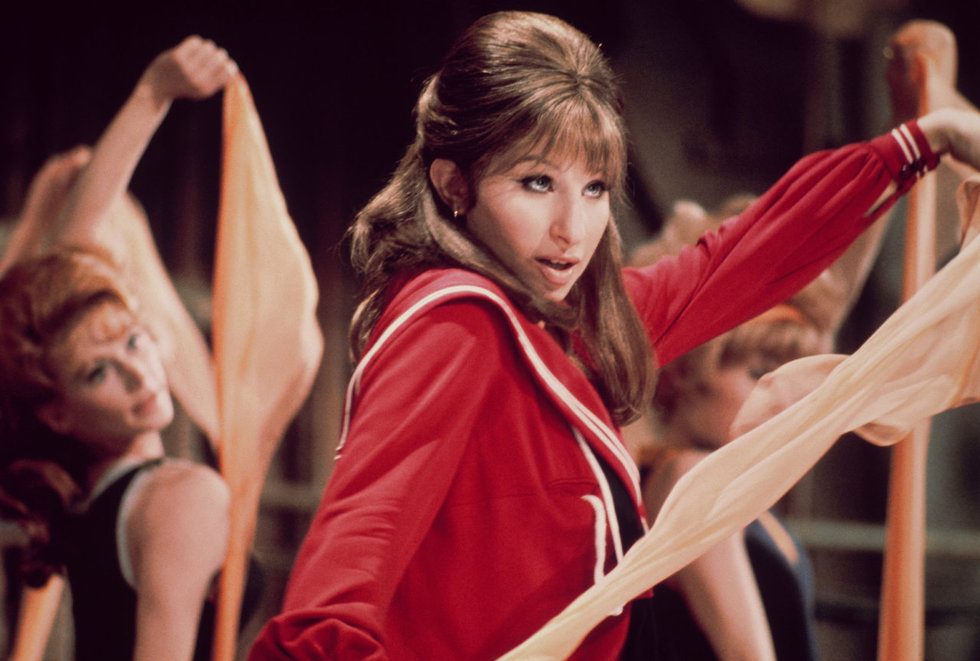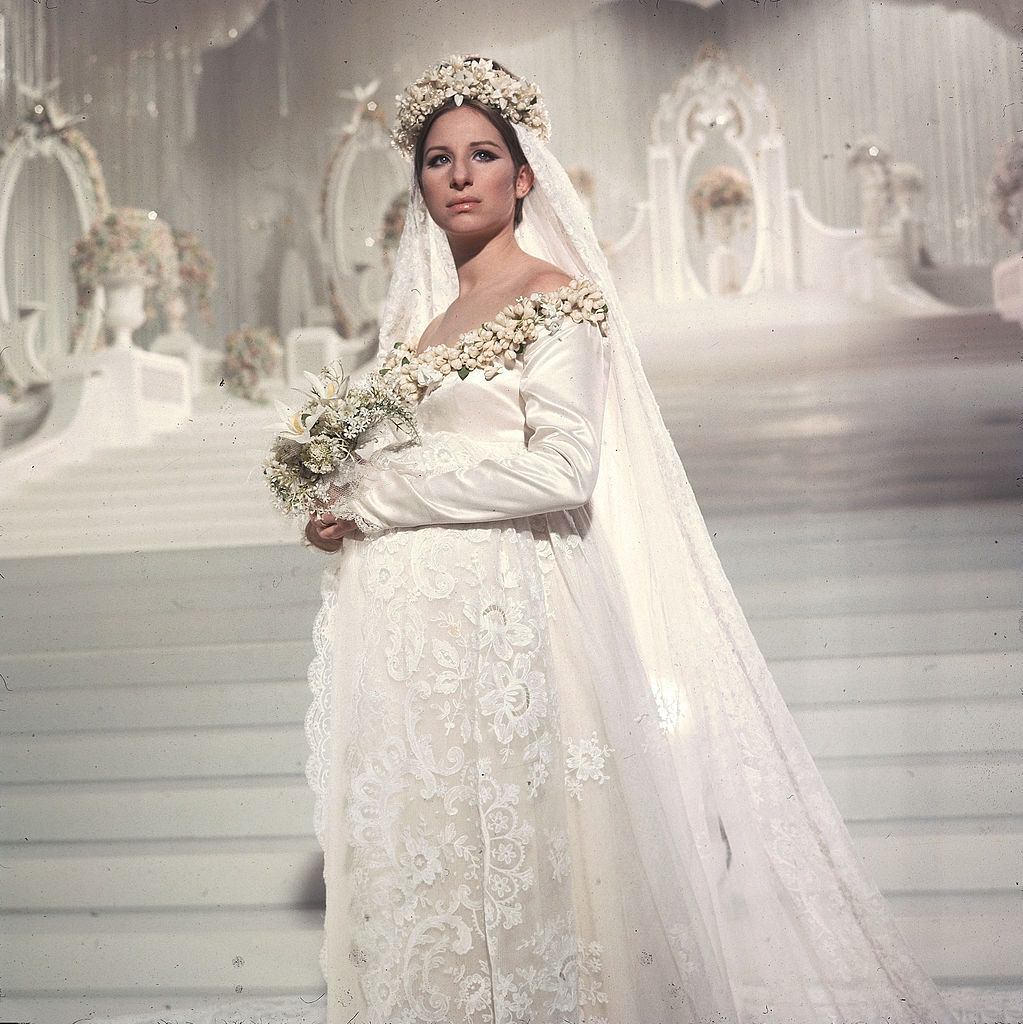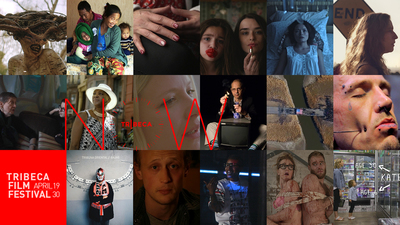
BY MATTHEW ENG |
The Greatest Star: How Barbra Streisand Broke Out Her Own Way in FUNNY GIRL
Barbra Streisand didn't just deliver one of American cinema's most spectacular star turns in FUNNY GIRL. She also innovated a new type of movie star.

Hollywood’s Golden Age can best be remembered as a time of magnificent and methodical star-making, a practice which would quickly become a most necessary component in the never-ending production of movie magic. Look back at the history of any single screen performer from this classical era and you will inevitably find, with few exceptions, a high-handed studio head, visionary auteur, or personal Svengali sculpting and specifying an actor’s persona from behind-the-scenes.
This dream factory was disrupted in the early 1950s by a new wave of young, angst-ridden, and predominantly male actors, including Marlon Brando, James Dean, and Paul Newman. These men, along with less-beatified women like Geraldine Page and Kim Stanley, rebuked the prescribed, agreeable star templates of the studio system and fashioned their own actorly identities, enshrining a rebellious, Method-leaning model that would be followed and warped by generations of actors for decades to come. But it wasn’t until the mid-sixties birth of the New Hollywood movement, the final nail in the coffin of the studio system, that the shaping of one’s star persona could be left almost entirely in the hands of the performer herself.
It’s interesting, then, that one of the most distinctive and enduring stars to emerge from this decade burst onto the screen with a performance that simultaneously evoked and modernized so many trademarks of classic comic and musical entertainers of both stage and screen. And, most importantly, it enshrined a persona seemingly created by none other than the woman who embodied it.

When Barbra Streisand arrived in Hollywood in 1967 to shoot her big screen debut in William Wyler’s Funny Girl, she was already a Tony-nominated and Grammy-winning star who had yet to cement her ascendancy in motion pictures. A biographical musical of the burlesque comedian Fanny Brice, Funny Girl had been a smash on Broadway when it opened in 1963, thanks in largest part to Streisand’s singular star turn, which dazzled sold-out houses of rapt audiences, as well as faraway fans, whose only exposure to the musical was through its original soundtrack, a household staple and Album of the Year nominee at the 1965 Grammys. Such was the power of Streisand’s performance: even sight unseen, it commanded attention.
It only made sense that Streisand would get to reprise her breathlessly-praised stage turn on the big screen as the production prepared for a full-scale film treatment. But Columbia Pictures was dubious of Streisand’s commercial appeal, which is to say that they were really wary of her unorthodox looks and inextricable Jewish ethnicity. (They preferred Streisand’s friend Shirley MacLaine.) It took the adamance of producer Ray Stark, who had struggled to bring Brice’s story to the screen since the 1950s and threatened to walk if Streisand wasn’t given the role, to secure the actress this star vehicle that would catapult her to the highest rungs of the Hollywood elite.
To watch Funny Girl now is to witness a born performer not only basking in her spotlight but confidently using it to hone her craft and flex her abilities. There is no tentativeness, no betrayal of her admitted inexperience. Streisand may have been new to this more understated medium, but the camera never diminishes Streisand so much as it actually magnetizes her larger-than-life presence. The film retains what made Streisand such a supremely engaging personality on the boards and tailors it to fit the frames and angles of an art form that can be far more intimate and expansive than a proscenium stage. An unacquainted viewer could easily and understandably assume that Funny Girl is a mid-career effort from Streisand and not her very first appearance on the silver screen.

Maybe that’s because Streisand brought a well-honed persona to the movie that didn’t originate with the play or even her earlier breakout role as the frazzled secretary Miss Marmelstein in the 1962 musical comedy I Can Get It For You Wholesale. This persona, in both look and sound, is indebted to artists as varied as Judy Garland, Judy Holliday, Lena Horne, Ethel Merman, Édith Piaf, and, of course, Fanny Brice. But its invention began solely with Barbra.
Much is already known about Streisand’s early years as a Brooklyn-born neophyte. Her mother, Diana Rosen, was at the time an acclaimed soprano, curbing her daughter’s rare vocal gift before ultimately becoming one of her biggest champions. A decent student in school, Streisand was much more studious and self-motivated when it came to performance. She had big designs on artistic stardom but was less inclined towards the role of chanteuse than that of thespian, a serious dramatic actress in the vein of Sarah Bernhardt. But it wasn’t until her years as a struggling Greenwich Village gypsy that Streisand realized her voice, uncommonly pliable and full of multifaceted personality, was her true calling card, an awe-inspiring attention-getter that could be leveraged into more opportunities when placed among the right crowds. And the right crowds did hear it: Streisand became a staple at nightclubs and gay haunts, devising acts full of sumptuous jazz standards, peppered with clever comic asides between songs. By the age of twenty, her coming-out in Wholesale, during which Streisand’s second-act solo “Miss Marmelstein” stole the show every single night, had made her a city-wide sensation, paving the way for her Funny Girl triumph.
One of the most revealing and oft-repeated anecdotes during Streisand’s early rise comes courtesy of famed casting agent Michael Shurleff, who advocated for this aspiring actress with the great voice even as he was told time and time again by birdbrained bigwigs that a girl with her strongly unconventional features had no place in show business. Shurleff landed Streisand an appointment with himself, legendary director Arthur Laurents, and producer extraordinaire David Merrick on the very last day of auditions for Wholesale. She arrived late, clad in a raccoon coat and two unmatched shoes, chewing gum and nattering on about a pair of heels she had just seen in the window of a thrift shop, much to the bewilderment of the trio watching her. She sang two notes, stopped, and demanded a stool to sit on. She resumed, stopped again, and proceeded to remove the gum from her mouth and stick it underneath the stool. She finally sang — and enthralled all three men, who encouraged her to sing two more songs. When she left, the men took to the stage to discuss Streisand. Merrick called her a “nut” as Shurleff vouched for the performer. Laurents, meanwhile, ran his hand under the stool, only to realize that Streisand’s gum was nowhere to be found, even though she hadn’t retrieved it on her way out. That’s because there hadn’t been any gum in the first place. Streisand had devised the entire act, from gum to coat to shoes to stool, to prove that she could indeed act. And, thus, Barbra claimed the role of Miss Marmelstein, a kooky supporting character that fit her to a T.

This story, beyond demonstrating Streisand’s preternatural ability to make an impression, solidifies that no one was more adept at molding Streisand’s image than herself. And, what’s more, she emerged with this unique persona fully formed. She could be as boldly and brassily hilarious as a Holliday or Merman then level her audience with a voice that contained Horne’s silken clarity, Garland’s full-throated muscularity, and Piaf’s earthquaking emotionality. But Streisand’s closest antecedent is actually Brice, whose persona is a rich complement to Streisand’s own. Throughout her wildly successful career, Brice fluidly moved between her dual identities of borsch belt jokester and sober torch songstress. She could be deeply, toughly sensuous one moment and then playfully comedic the next, a broad-grinning clown who was equally compelling when the smile faded and the makeup was wiped away.
Even before Funny Girl took shape, Streisand’s silly-sultry performance style shared an obvious kinship with Brice, who never made the full-time transition from stage to screen despite a handful of notable attempts. In fact, many Streisand devotees might not even be aware of Brice’s legacy beyond the former’s celebrated if dramatically-skewed interpretation. In Funny Girl, which narrativizes the broad strokes more than than the exact details of its subject’s rise, Brice is a determined talent with a prodigious belt who, like Streisand, is deterred from show business for a lack of generic prettiness. This self-described “American Beauty rose with an American Beauty nose” becomes an unlikely star under the guidance of theatrical impresario Florenz Ziegfeld only to lay it all on the line for the love of an untrustworthy man, the gambler Nicky Arnstein, played by Omar Sharif, whose casting quickly turned controversial when the Israeli-Egyptian Six Day War broke out during rehearsals in June of 1967.
Streisand’s fictionalized Brice ultimately came to eclipse the real one in the public conscious, a remarkable feat: after all, how many icons have made their name playing another icon? And yet the performance itself is at once a soulful continuation of the path laid by Brice and a slyly radical distinguishing act on the part of Streisand. Her casting as Brice is such an ideal, pairing of actress and character that it’s all too easy to talk about her work in hazily romantic terms, as though unable to see her completely beyond her own mega-watt glow. But to do so is to detract from what Streisand contributed to Funny Girl, which isn’t just a sparkling realization but a full-bodied expansion of what it means to be a movie star, with one’s distinctions firmly intact.

In Funny Girl, Streisand is handed many stock personalities that were all at one point attached to Brice, among them the ugly duckling, outsized jester, and lovelorn wife. And the film that surrounds her, true to the grand musicals still being built somewhat anachronistically in 1967, is massive in Wyler’s somewhat ungainly construction. A less assured and self-aware performer might be tempted to match the monumental scale of the film by playing the broadness of each transitionary period in Brice’s life. But Streisand never does. She achieves Brice’s essence while also conveying her own, not by mugging or even particularly impersonating Brice but by inhabiting the character and thus deepening it through her own consummate and inquisitive playing.
Streisand’s voice is, as ever, an astonishing tool for communicating character, lending all of her pre-recorded lyrics the thrilling urgency of a seemingly spontaneous line reading. (The amount of charm and palpable feeling she wrangles out of the digressional lyric, “Just suppose he wants his dinner back,” during the seduction number “You Are Woman, I Am Man,” must be heard to be believed.) But there’s a restless, lived-in physicality to the performance as well that might be easy to overlook amid all the coloratura flourishes. Streisand refuses to take herself seriously in Fanny’s performance scenes as a Ziegfeld star, capturing the antic, mischievous vitality of the real woman and paralleling it with her own unflagging energy, honed on the stage, in which any signs of fatigue are visible as far back as the balcony. In a similar vein, there is an entire character arc perceptible in Streisand’s bodily comportment, also indebted to her time on the stage, where physical completeness of character is all but a requisite. She transforms Fanny from a slouching wallflower of girlish uncertainty to a focused figure of womanly self-possession. She uses her arms and hands emphatically, like emotional lightning rods, never more so than in the final seconds of the film’s wrenching finale, a reworked version of Brice’s own solemn number “My Man,” sung by Streisand in front of a black backdrop that blends in with her own long black gown. It’s a canny visual set-up that refuses to pretend there is anything more striking than Streisand, whose raised chin and rising arms turn this elegy for a lost love into a moment of triumph.
In this way, we get the sense that Streisand is finding the character in real time, operating from a place of impulsivity rather than dull idolatry. But sometimes Wyler, who continually shot down claims that the famously perfectionist Streisand ran the show on Funny Girl, just gets in her way. The showy aerial shot that swoops in and out on Fanny at the end of “Don’t Rain on My Parade” may make for technically impressive cinema but it only undercuts the emotional urgency of the song and Streisand’s crackling rendition. It separates us right at the moment we long to take in her every quaking gesture. And yet, Streisand always comes out on top, carrying the movie in a way that few stars have ever managed to do. Wyler, in turn, is all too happy to keep so many of his other actors waiting in the wings, including a shockingly Oscar-nominated Kay Medford in her severely-diminished Broadway role as Brice’s wisecracking mother, Rose. But complaining about Funny Girl's underutilized supporting cast is like complaining that the landscape of the Mona Lisa isn’t as stupendous as the simpering, enigmatic figure at its center. In Funny Girl, Barbra is the main attraction. Everything and everyone else is just background.

This is what’s so refreshing about Funny Girl, then and now. It put at the forefront a confident, captivating, and not unimportantly Jewish woman who was no shrill nag or loud neurotic. Streisand's Fanny may be a shameless self-promoter and a maker of dubious personal decisions, but she's also a galvanizing talent, a shrewd businesswoman, and a wholehearted romantic who is desired and desires, without ever becoming anything like a mere love object. (If anything, it's Sharif, with his oft-referenced, matinee idol “prettiness,” who functions as a passive love interest within the film.) This isn’t so much an achievement of astute writing so much as a testament to Streisand, who carried over the characteristics of the female performers who came before her in an arrestingly modern package, all the while never pretending to be anything other than Barbra. What’s equally refreshing and even downright subversive is that Streisand independently built this bridge to stardom from the outside as a most observant student of the Hollywood star model who brings an unusual élan to her embodiment of The Star.
Viewers and critics alike were almost unanimously bowled over by Streisand’s tour de force. In the Chicago Sun-Times, Roger Ebert wrote that the “magnificent” Streisand “has the best timing since Mae West, and is more fun to watch than anyone since the young Katharine Hepburn.” Streisand would share the 1968 Academy Award for Best Actress with Hepburn (for The Lion in Winter), a surprising if completely fitting outcome given that Hepburn, like Bette Davis and Olivia de Havilland, was one of the few female icons of Hollywood’s classical era who chose her own roles and blazed her own trail at a time when most stars were treated like well-compensated cattle by studio overlords.
Perhaps the most fitting summation of Streisand’s potent novelty came courtesy of the great Pauline Kael, one of Streisand’s most ardent champions and defenders. “It’s been commonly said that the musical Funny Girl was a comfort to people because it carried the message that you do not need to be pretty to succeed,” wrote Kael in her review for The New Yorker. “That is nonsense; the ‘message’ of Barbra Streisand in Funny Girl is that talent is beauty. And this isn't some comforting message for plain people; it's what show business is all about…”

This conviction — that undeniable talent is its own virtue in Hollywood — has secured Streisand’s longevity in the business, even in the later decades when acting took a backseat to directing, singing, and activistic concerns. Streisand would soon become blonder and tanner, but she would more or less maintain her idiosyncratic aura over the course of just 19 feature films, nine of them made in the 1970s, including one weepie for the ages (The Way We Were) and a high-profile, self-initiated remake that scaled the heights of her own hero worship (A Star is Born). With films like The Owl and the Pussycat and What’s Up, Doc?, she also became something like a screwball heroine — and a successful one, at that — during a time when such comedies might have understandably been considered passé. And, like the most self-assured of stars, she always kept up appearances. Case in point: when Streisand slinked up to the stage in a see-through, spangled-out pair of couture pajamas to give her Oscar acceptance speech in 1969, the newly-anointed winner looked down at her trophy and repeated Funny Girl’s most iconic line — “Hello, gorgeous” — in an impeccable mimicry of her own throaty delivery.
Indeed, you can sense Streisand settling into her iconicity in Funny Girl, developing and encapsulating the descriptive gestures and droll inflections that would quickly become trademarks of her performative persona, which would soon be emulated by many comedic actresses, particularly on the smaller screen. To watch Jennifer Aniston or Sarah Jessica Parker push against the rhythm of a scene on Friends or Sex and the City with an unexpected facial expression or a sideways line reading is to see Streisand's influence directly at work.
Iconicity can be a dull or hollow pursuit, which makes the vivacious individuality of Streisand’s performance all the more fascinating. The traditional nature of Streisand’s star vehicles (pageant-like musicals, romantic tearjerkers, broad farces) may have prevented her from becoming an obvious symbol of the sixties and seventies counterculture. But by being so matter-of-factly herself in an industry that so frequently strives for a uniform idea of womanhood, Streisand exuded a spirit of nonconformity that could be accepted by the masses precisely because it came in such classical models. And, of course, it also helped that the talent showcased within these projects was never less than intoxicating.
Is it any wonder that not a single Broadway revival of Funny Girl has been mounted in the 50-plus years since Streisand’s debut? Her hold on the part is that unyielding and unfading. The images of Streisand swooning on a stairwell while crooning “People,” marching to the beat of her own heart in “Don’t Rain on My Parade,” and holding her head high during “My Man” are as deeply secured in the minds of moviegoers as Judy Garland glancing up at a sepia-toned sky while singing for a land over the rainbow or a lovestruck Gene Kelly splashing and tapping through a deluge of rain.
Garland, Kelly, and countless others paved the way for the song-and-dance tradition that Streisand would uphold in her first film appearance, which arrived in theaters some time after this distinctly American genre truly peaked. And yet what Streisand accomplishes in Funny Girl is at once a redefinition of what a musical star can look like as well as a reconfirmation of what so many of us return to the movies to find: unparalleled talent in motion. Such talent, as exemplified in Streisand’s performance and throughout her peerless career, is indeed, as Kael declared, its own form of beauty. But with the lights low and the screen bright, it can also be its own elusive form of magic, as pure and pleasurable as any ever captured on film.

